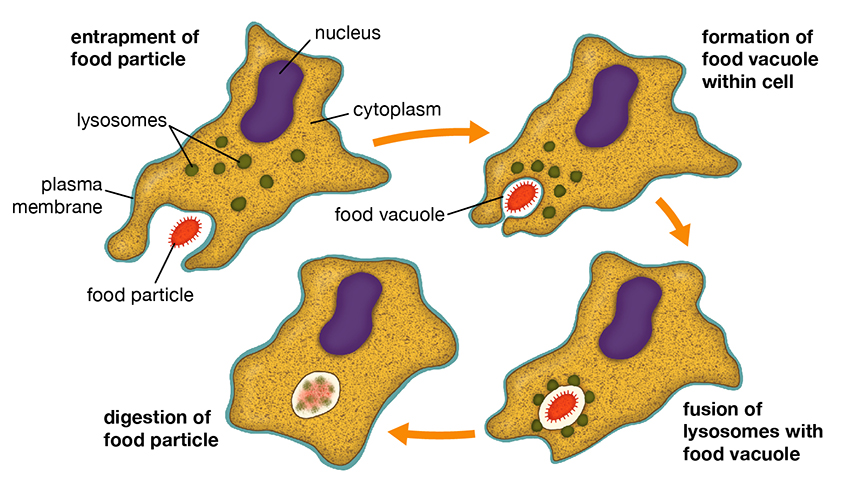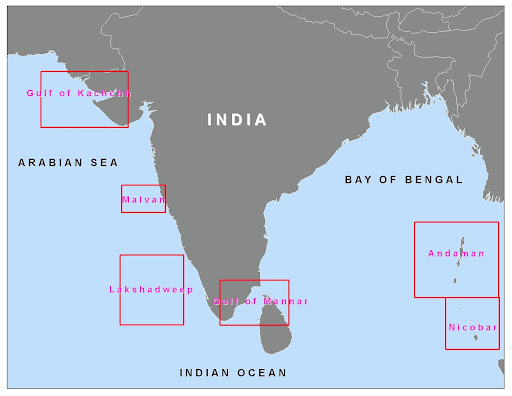Biodiversity & Environment
Immune Cells in Sea Corals
- 24 Aug 2021
- 6 min read
Why in News
A new study has identified for the first time that specialised immune cells (phagocytic cells) exist in certain varieties of sea corals and anemones.
- It will help in better understanding how reef-building corals and other reef animals protect themselves from foreign invaders like bacteria and viruses found in and around coral reefs.
Phagocytosis
- It is the process by which certain living cells called phagocytes ingest or engulf other cells or particles.
- The phagocyte may be a free-living one-celled organism, such as an amoeba, or one of the body cells, such as a white blood cell.
- In some forms of animal life, such as amoebas and sponges, phagocytosis is a means of feeding.
- In higher animals phagocytosis is chiefly a defensive reaction against infection and invasion of the body by foreign substances (antigens).
Sea anemones
- They are sometimes called the 'flowers of the sea', sea anemones are actually beautiful animals, they are a close relative of coral and jellyfish, and are the marine, predatory animals of the order Actiniaria.
- They are found from the tidal zone of all oceans to depths of more than 10,000 metres.
Key Points
- Coral:
- Corals are made up of genetically identical organisms called polyps. These polyps have microscopic algae called zooxanthellae living within their tissues.
- The corals and algae have a mutualistic relationship.
- The coral provides the zooxanthellae with the compounds necessary for photosynthesis. In return, the zooxanthellae supply the coral with organic products of photosynthesis, like carbohydrates, which are utilized by the coral polyps for the synthesis of their calcium carbonate skeletons.
- In addition to providing corals with essential nutrients, zooxanthellae are responsible for the unique and beautiful colors of corals.
- They are also called the “rainforests of the seas”.
- There are two types of corals:
- Hard, shallow-water corals—the kind that builds reefs.
- Soft corals and deepwater corals that live in dark cold waters.
- Corals are made up of genetically identical organisms called polyps. These polyps have microscopic algae called zooxanthellae living within their tissues.
- Benefits of Coral:
- Habitat:
- Corals are home to over 1 million diverse aquatic species, including thousands of fish species.
- Income:
- Coral reefs and related ecosystems have a global estimated value of USD 2.7 trillion per year, or 2.2% of all global ecosystem service values’, this includes tourism and food.
- Coastal Protection:
- Coral reefs reduce shoreline erosion by absorbing energy from the waves. They can protect coastal housing, agricultural land, and beaches.
- Medicine:
- Reefs are home to species that have the potential for treatments for some of the world’s most prevalent and dangerous illnesses and diseases.
- Habitat:
- Threats:
- Overfishing & Destructive Fishing:
- Overfishing can affect the reef’s ecological balance and biodiversity.
- Fishing with dynamite, cyanide, bottom trawling and Muro Ami (banging on the reef with sticks) can damage entire reefs and is unsustainable.
- Recreational Activities:
- Unregulated recreational activities and tourism cause damage to the very environment upon which the industries depend.
- Coastal Development:
- Coastal areas have some of the fastest rates of growth in tropical countries. Sensitive habitats are destroyed or disturbed by the dredging of deep-water channels or marinas, and through the dumping of waste materials.
- Pollution:
- Urban and industrial waste, sewage, agrochemicals, and oil pollution are poisoning reefs.
- Climate Change:
- Coral Bleaching: When water is too warm, corals will expel the algae (zooxanthellae) living in their tissues causing the coral to turn completely white. This is called coral bleaching.
- Ocean Acidification: The rising acidity of the oceans threatens coral reefs by making it harder for corals to build their skeletons.
- Overfishing & Destructive Fishing:
- Initiatives to Protect Corals:
- Global:
- International Coral Reef Initiative
- Global Coral Reef Monitoring Network (GCRMN)
- Global Coral Reef Alliance (GCRA)
- The Global Coral Reef R&D Accelerator Platform
- Indian:
- India has included the studies on coral reefs under the Coastal Zone Studies (CZS).
- In India, the Zoological Survey of India (ZSI), with help from Gujarat’s forest department, is attempting a process to restore coral reefs using “biorock” or mineral accretion technology.
- National Coastal Mission Programme, to protect and sustain coral reefs in the country.
- Global:
Major locations of corals in India
- Coral reefs are present in the areas of Gulf of Kutch, Gulf of Mannar, Andaman & Nicobar, Lakshadweep Islands and Malvan.






